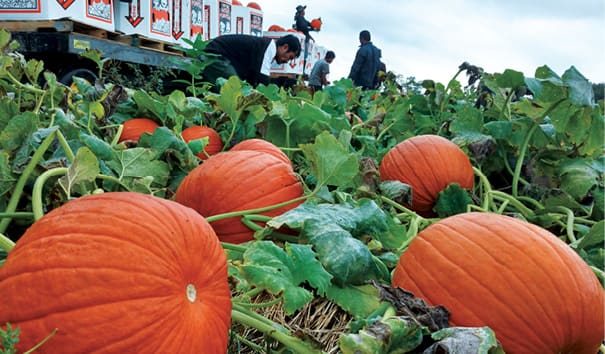Horticulture plots can also benefit from no-till practices, according to a study by researchers at Kansas State University.
The study looked a pumpkin plots in Kansas, where the Halloween staple is frequently grown in rotation following soybeans, and are a staple of agritourism, according to the study published in the Soil Science Society of America Journal.
Researchers compared eight management systems. One system, used as the control, was tilled twice per year and used no cover crops. The other seven systems were tilled once per year, and varied the type of cover crops used. Cover crops used included:
- cereal rye
- cereal rye and Austrian winter pea
- cereal rye and hairy vetch
- cereal rye and canola
- rye, vetch and canola
- oat
- oat and Austrian winter pea
Researchers used a roller-crimper to terminate the cover crops in June, about two weeks before the pumpkins were hand-planted, both as seeds and seedlings. Soil health results were monitored for 2013-15. Research plots at Olathe and Haysville provided the acres, and reported wetter-than-normal precipitation in 2013 and drier-than-normal in both 2014 and 2015. The Olathe site was Kennebec silt loam soil, while the Haysville site was Canadian-Waldeck fine sandy loam soil.
The results didn't show uniform differences among the various mixes. The rye-vetch-canola and oat systems produced more biomass during 2014 at the Olathe site. At the Haysville site in 2014, the oat and oat-pea systems produced more biomass than the rye systems.
Researchers observed no differences in biomass among systems at either site in 2015.
By the end of the experiment in 2015, the cover cropped acres at Olathe had a more aggregates in the largest category, greater than 4.75 mm, while the tilled system had more aggregates in the smaller classes. The mean weight diameter (MWD) for the cover cropped Olathe soils was 4.2 mm, while the average for tilled system was 2.9 mm. None of the cover crop schemes showed a particular advantage over any of the others.
Cover cropped soils at the Haysville site showed the greatest total aggregation (93%) compared to tillage, which recorded aggregation of 83%.
Two other measures of soil health, water infiltration and bulk density, showed no significant differences.
"Adding cover crops and reducing tillage in a pumpkin production system can begin to cause a measureable change in soil aggregation in a short period of time," the researchers wrote.






Post a comment
Report Abusive Comment